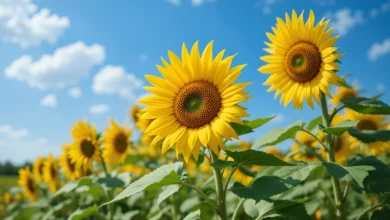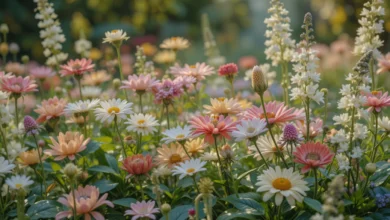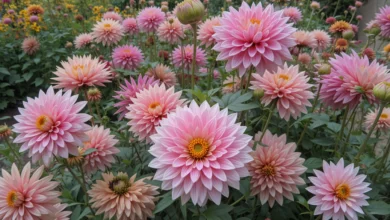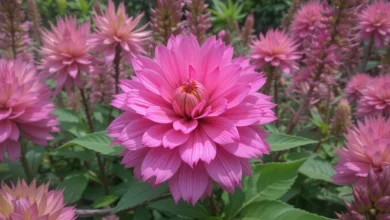Best Time to Fertilize Hydrangeas for Vibrant Blooms
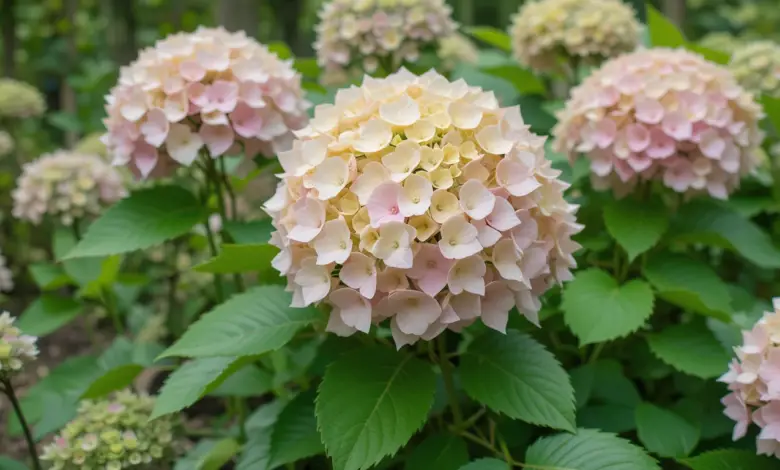
Hydrangeas are one of the most beautiful and popular garden plants. Known for their large, colorful blooms, hydrangeas can add a stunning pop of color to any garden. But to keep them thriving and producing those gorgeous flowers, it’s essential to know when and how to fertilize them. Fertilizing your hydrangeas at the right time is key to getting healthy, vibrant blooms year after year.
In this article, we’ll dive into the best time to fertilize hydrangeas and offer tips on how to fertilize them correctly. Whether you’re a beginner gardener or an experienced plant lover, these tips will help you keep your hydrangeas looking their best.
Why Fertilize Hydrangeas?
Fertilizing is essential for hydrangeas because it helps them get the nutrients they need to grow strong and produce healthy flowers. Fertilizers provide the following benefits:
- Encourages strong growth: Fertilizer helps hydrangeas grow lush and strong, creating vibrant flowers.
- Promotes healthy blooms: The right fertilizer encourages blooming, ensuring that your hydrangeas produce those gorgeous flowers you love.
- Supports overall plant health: Regular fertilization helps hydrangeas fight off diseases and pests, improving their overall health.
But, just like any plant, timing is important when it comes to fertilizing hydrangeas. Fertilizing at the wrong time can actually harm your plant or prevent it from blooming properly.
When is the Best Time to Fertilize Hydrangeas?
The best time to fertilize hydrangeas depends on the type of hydrangea you have, the climate you live in, and the fertilization method you choose. However, there are some general guidelines you can follow to ensure the healthiest plants and the best blooms.
1. Early Spring (Before New Growth Starts)
The best time to fertilize hydrangeas is in early spring, just before the new growth begins. Fertilizing early helps give your plants a good start as they begin to grow for the season. It also gives the plant time to absorb the nutrients and get the energy it needs to produce strong stems and leaves.
- Why Early Spring?: In early spring, the soil begins to warm up, and the hydrangeas start to come out of dormancy. Fertilizing at this time provides the plant with a boost of energy right when it needs it, setting the stage for healthy growth and vibrant blooms.
- Tip: If you live in a cold climate, wait until the last frost has passed before fertilizing. You don’t want to fertilize too early, as the plant may not be actively growing yet.
2. Late Spring or Early Summer (After the First Bloom)
After the first flush of blooms appears, it’s a good idea to fertilize your hydrangeas again to encourage more blooms throughout the season. This is especially important for reblooming varieties, like Endless Summer or Twist-n-Shout, which produce multiple rounds of flowers.
- Why Late Spring/Early Summer?: Fertilizing after the first bloom gives your hydrangeas the nutrients they need to continue flowering throughout the growing season. The extra boost will help the plant conserve energy and create more buds for future blooms.
- Tip: Apply a balanced fertilizer with equal parts nitrogen, phosphorus, and potassium, or use a specialized fertilizer designed for hydrangeas.
3. Late Summer (For New Growth and Future Blooms)
If you want to ensure your hydrangeas continue to bloom well into fall, you can apply a light dose of fertilizer in late summer. This will help your plants continue to grow strong and healthy, making them ready for the next bloom cycle.
- Why Late Summer?: Applying fertilizer late in the summer will support the new growth that starts to appear as the plant continues to grow. It also helps set the plant up for future blooms, ensuring the plant stores enough energy to come back strong next season.
- Tip: Use a slow-release fertilizer at this stage to prevent over-fertilizing and encourage gradual growth throughout the late season.
4. Avoid Fertilizing in Fall and Winter
It’s important to stop fertilizing your hydrangeas in the fall and winter. Fertilizing during these months can cause new growth to develop when the plant is supposed to be resting, which can lead to weak, frost-damaged growth.
- Why Avoid Fall and Winter Fertilization?: Hydrangeas enter a dormant phase during the colder months, and fertilizing at this time can confuse the plant. New growth may not have time to harden off before the cold weather hits, leaving your plant vulnerable to winter damage.
- Tip: Allow your hydrangeas to rest during the fall and winter months to conserve energy for the next growing season.
What Type of Fertilizer Should You Use for Hydrangeas?
Now that we know when to fertilize, let’s discuss the types of fertilizers you should use for hydrangeas. There are two main types of fertilizers you can choose from: granular fertilizers and liquid fertilizers.
Read More: 5 Critical Mistakes to Avoid When Planting Dahlias in Your Garden
1. Granular Fertilizers
Granular fertilizers are slow-release and provide a steady supply of nutrients over time. They are an excellent choice for hydrangeas because they are easy to apply and are less likely to burn the plant if used correctly.
- How to Apply: Scatter the granular fertilizer around the base of the plant, following the manufacturer’s instructions on how much to use. Water the plant well after application to help the fertilizer soak into the soil.
- Benefits: Granular fertilizers are convenient and provide long-lasting nourishment for your hydrangeas.
2. Liquid Fertilizers
Liquid fertilizers are fast-acting and are absorbed quickly by the plant. These are especially useful if you want to give your hydrangeas a quick boost of nutrients. However, they tend to need more frequent applications compared to granular fertilizers.
- How to Apply: Mix the liquid fertilizer with water according to the package instructions, and apply it to the soil around the base of the plant. Be careful not to get the fertilizer on the leaves or flowers.
- Benefits: Liquid fertilizers provide immediate results and are great for plants that need a quick nutrient boost.
3. Organic Fertilizers
If you prefer to go organic, you can use organic fertilizers like compost, well-aged manure, or fish emulsion. Organic fertilizers release nutrients slowly and improve the soil quality over time, making them an excellent option for long-term plant health.
- How to Apply: Apply organic fertilizers as a mulch around the base of the plant or mix them into the soil before planting.
- Benefits: Organic fertilizers improve soil health and provide a balanced supply of nutrients.
How Much Fertilizer Should You Use?
It’s essential to use the right amount of fertilizer to avoid overfeeding your hydrangeas. Too much fertilizer can lead to excessive leaf growth and fewer blooms, or it may even burn the plant. Always follow the instructions on the fertilizer package, and if you’re unsure, it’s better to use less than more.
- Tip: A general guideline is to fertilize hydrangeas with a balanced fertilizer (like 10-10-10) every 4 to 6 weeks during the growing season. Avoid fertilizing in the fall and winter.
Signs Your Hydrangeas Need Fertilizer
While hydrangeas are generally easy to care for, they do need regular nutrients to stay healthy. Here are some signs that your hydrangeas might need more fertilizer:
- Yellowing leaves: If your hydrangea’s leaves are turning yellow, it may need more nitrogen.
- Poor blooming: If your hydrangeas aren’t blooming well, they may need more phosphorus.
- Slow growth: If the plant isn’t growing as fast as usual, it could be a sign that it’s not getting enough nutrients.
Conclusion
Fertilizing your hydrangeas at the right time is essential for promoting healthy growth and vibrant blooms. By following the best times to fertilize, using the right fertilizer, and providing proper care, you can enjoy beautiful hydrangea flowers year after year. Remember to fertilize in early spring, after the first blooms, and during late summer for continued blooming.
With these tips, your hydrangeas will thrive and fill your garden with their stunning colors and lovely fragrance. Happy gardening!

